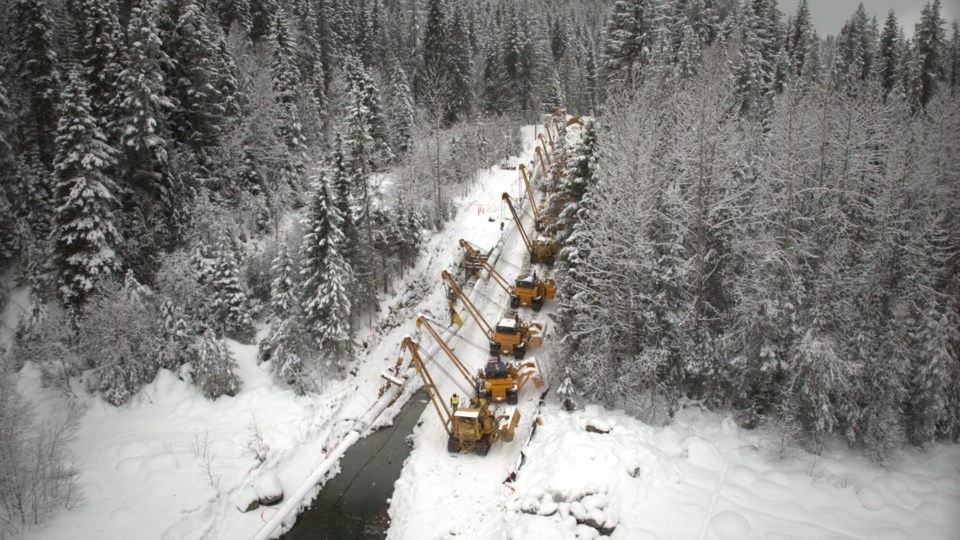Scott Hayes | [email protected]
Local Journalism Initiative Reporter
With the hydrostatic testing of the new line a success, work on the Trans Mountain Pipeline continues full steam ahead.
The Jasper construction yard began to demobilize in the middle of January, stated Trans Mountain’s media representative in an email to the Fitzhugh.
“There will be a decreased presence in the area over the next few months as right-of-way work will wrap up around March,” the statement read.
“In terms of work left in the Jasper area, there are two valve installations, hydrotesting in the Mount Robson area, Jasper pump station completion and then access and right-of-way clean up.”
The hydrostatic testing was originally scheduled during the first week of September but was forced to delay due to the Chetamon wildfire. The tests started during the first week of October instead. The process saw the 89-kilometre inactive section of the line from Hinton to the west boundary of Jasper National Park filled with pressurized water to check the integrity of the line.
Hydrostatic testing is a well-established industry practice used to confirm the ability of the pipeline to operate safely and determine if any repairs are needed, Trans Mountain previously told the Fitzhugh.
During the test, company personnel used precise instrumentation to monitor the pipeline to detect any signs of pressure release. The pipeline passed, holding up to pressure at 25 per cent above its intended maximum operating level.
According to Trans Mountain’s most recent e-newsletter updating progress on the pipeline between Jasper and Mount Robson, the work at the Jasper Pump Station includes clearing, installing fencing, installing piles and pouring concrete, installing mechanical equipment, piping and welding, construction of structural steel and buildings, electrical installation and instrumentation and site restoration.
Other work revolving around Jasper site access, reactivation digs and pipe replacement entails preparing site access points along the reactivation route including highway ramps or temporary bridges.
“Trenches will be dug in a number of sections along the line, pipe will be removed and replaced with new pipe which is then welded into place,” reads the e-newsletter.
The full scope of the work has seen reactivation digs and pipe replacement starting in January 2020.
Trans Mountain crews are anticipated to return in the summer for reclamation and vegetation management. Updates for all segments of work on the pipeline are always available on the company’s interactive map found at www.transmountain.com/all-communities.




